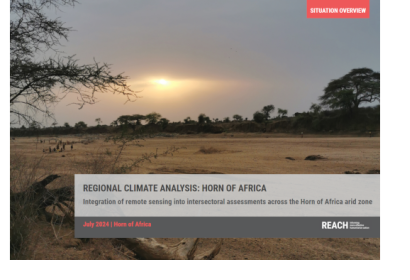Climate change is increasingly impacting vulnerable populations with climate-related shocks such as floods, droughts, and extreme heat. REACH conducts intersectoral assessments to better understand humanitarian needs in crisis situations and incorporates remote sensing into these studies. This approach aligns with REACH's goal to mainstream climate analysis and transcend the limitations of country-specific research.
The July 2024 report focuses on the Horn of Africa, examining the arid regions of Somalia, northern Kenya, and eastern Ethiopia to assess climate changes and their impacts. By integrating remote sensing with primary data, the report offers valuable insights into identifying potential shocks and verifying conditions, enhancing disaster risk reduction and preparedness in these transboundary zones.
You can find this analysis and other REACH publications in the Impact Initiative Resource Centre.

